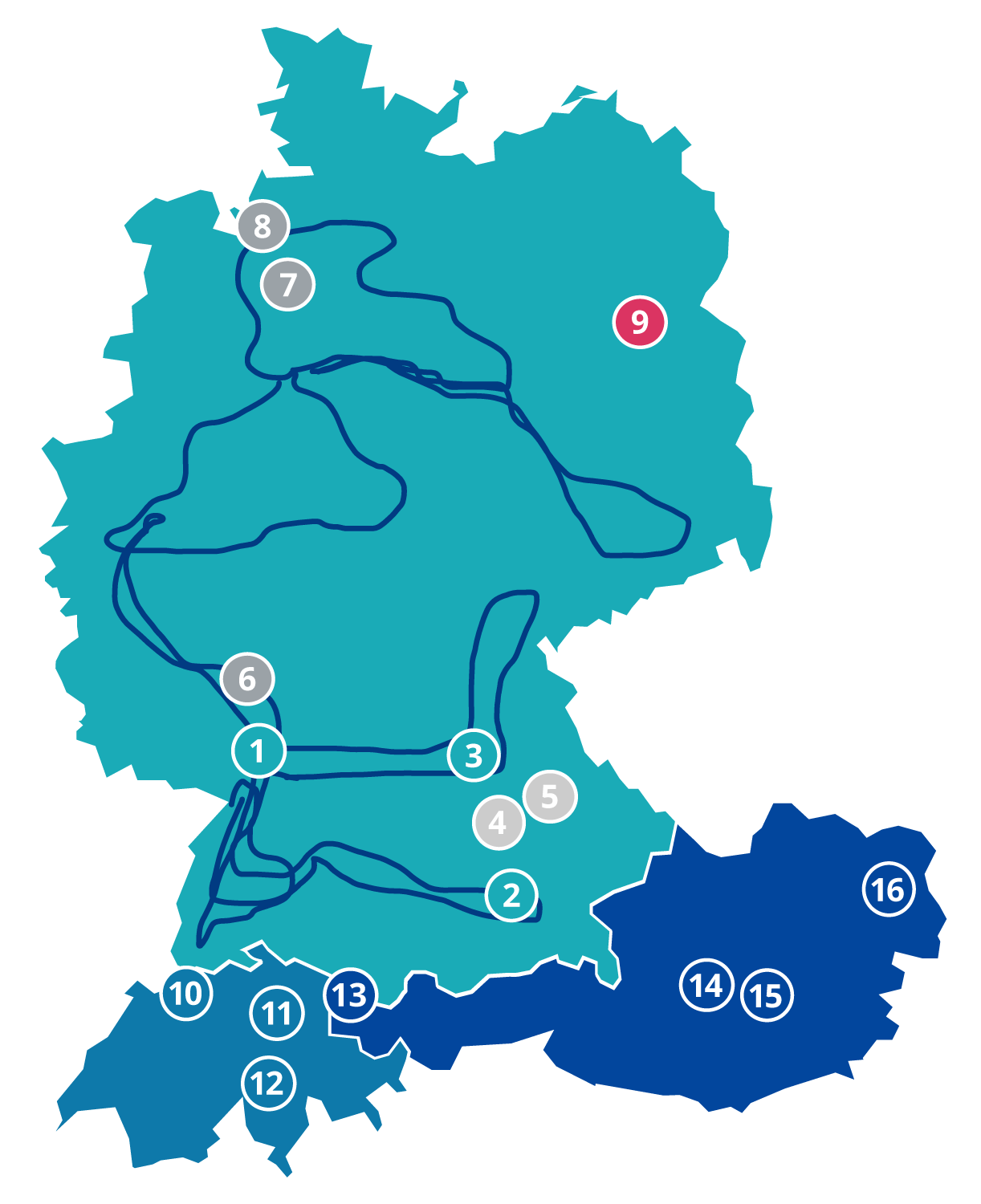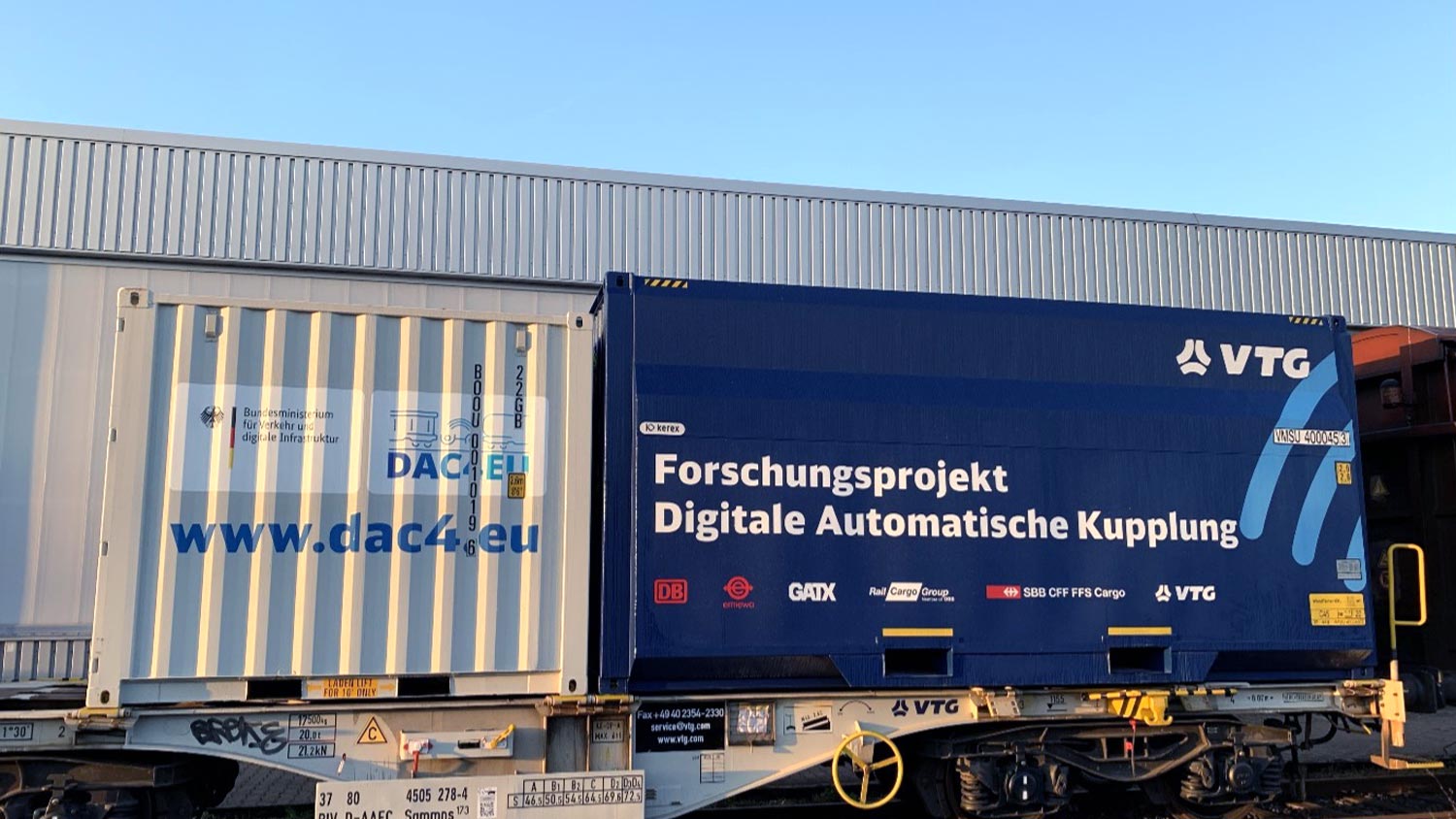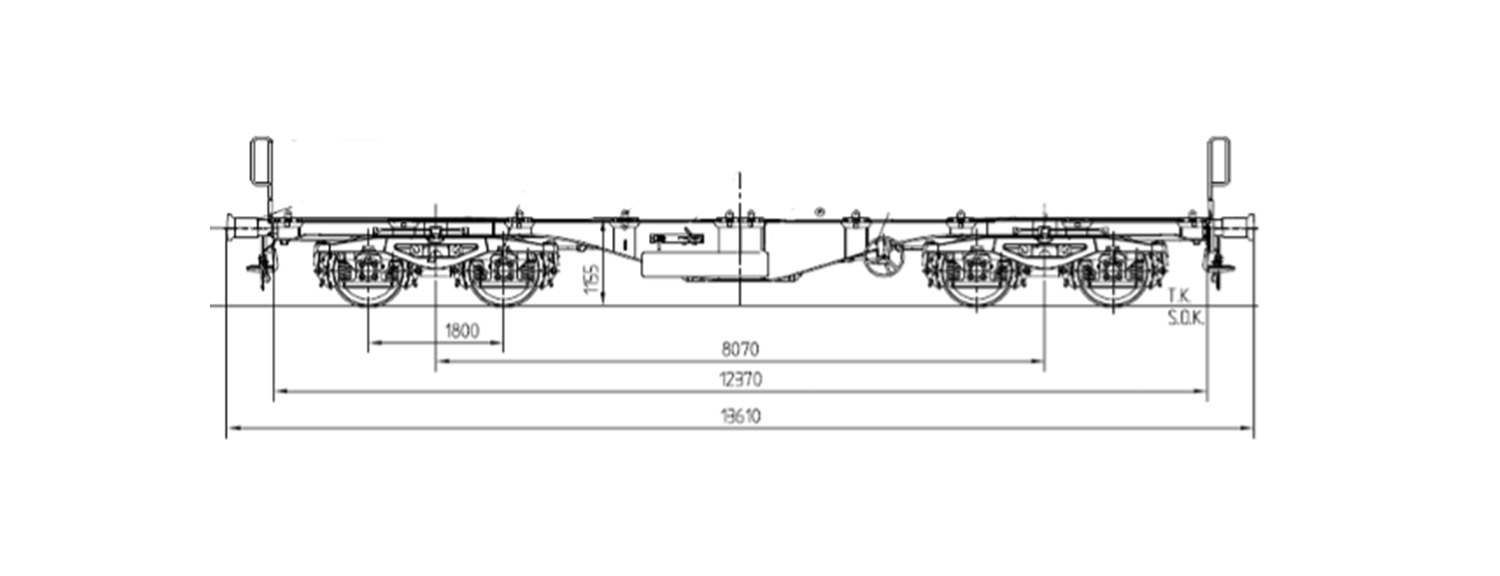
In-service testing in phase II
Objective
In project phase I, extensive coupling and driving tests were carried out using various test parameters.
The objective of phase I was to compare the performance of various coupling systems by carrying out selective individual tests under controlled ambient conditions. The investigations focussed on the mechanical behaviour of the various coupling designs and electrical characteristics of the electric couplings for power and data transmission.
Following the trials, the data was processed by DAC4EU and handed over to the EDDP. On 21 September 2021, the EDDP, based among other things on the test results provided by DAC4EU, specified the Scharfenberg/latch-type design as the future European DAC standard coupling head (see EDDP press release).
For the DAC4EU demonstrator this means that only the DAC prototypes by the manufacturers Voith and Dellner will be carried over to phase II of the project, as these prototypes correspond to the coupling head design specified by the EDDP.
In phase II, the DAC4EU demonstrator train will be gradually extended to 24 wagons with the chosen coupling design. Operational sequences and processes which are affected by using a DAC when forming, breaking up and operating trains are to be tested with the DAC prototypes. The aim is to gain insights into the operational behaviour during operation in the field.
In 2021 the demonstrator train will initially travel on selected routes in Germany, then also in Austria and Switzerland from the start of 2022. The aim of this is to provide further insights into the DAC Type 4 and the operational handling in particular, and to elaborate the technical details from phase I. This phase should also be used to present the benefits of the DAC and to present the demonstrator train to external stakeholders. The field testing should be complete in December 2022.
Test cases
The DAC tests are carried out in actual operating scenarios. The following key test areas and corresponding test scenarios were defined:
Development of a measurement concept
Mechanical measurements
The following variables are measured at the wagons of the individual wagon groups:
Current and data measurements
An overview of the current and data measurements in phase II is shown below.
Test locations
The tests are performed at operating locations and on routes with specific characteristics.
The marshalling yards and an example network of the routes to be travelled during field testing until March 2022 are shown in Figure 1. Location which are shown in light grey are optional and will be approached if the time and route map allows.

Figure 2: Marshalling yards in Germany, Switzerland and Austria in phase IIa and example network of routes for Germany
Schedule
Field testing in phase IIa started in July 2021 and will initially be carried out at the marshalling yard in Mannheim.
Following journeys and operational tests in Germany, tests will be carried out for four weeks in Austria and Switzerland respectively with the demonstrator train in marshalling yards, on journeys and on railway sidings from the start of February 2022.
It is hoped that the conditions in Austria and Switzerland will be wintry, so that the DAC and installed automation components can be tested once again under these conditions.
Once the tests in Austria and Switzerland have been concluded, the DAC demonstrator will be transferred to Germany again, upgraded and tested until June 2022. Tests in other European countries are planned in July and August 2022.
In September 2022, the demonstrator train will be presented at Innotrans 2022 in Berlin.
Following Innotrans 2022, tests and journeys in Germany are envisaged until the end of the year.
Demonstrator train
in phase II
In phase IIa, a wagon group consisting of up to five wagons is to be formed, depending on the coupling design or manufacturer. In addition to the wagon configuration tested in phase I, the DAC wagon unit is to be extended to include an additional Zags 119 and a container wagon Sgmmns(s) 40ʹ.
A 10ʹ and 20ʹ container will be loaded on the Sgmmns.
As is the case in phase I, the first and last wagon of a wagon group will be equipped on one side with a screw coupling so the group can be coupled with the measuring wagon, a (shunting) loc or additional wagon group.
automation components
in the demonstrator train
A further focus of the work during phase II is the selection of suitable automation components in order to verify the functionality of the power and data supply in the demonstrator train.
The following functions or automation components are to be set up in phase II:
Train initialisation
When the train is initialised, the freight wagons within a block train connect to the communication network. The first step when preparing an intelligent freight train is to initialise the train, as the train preparation processes can only be automated if it is also known which freight wagons are in the block train. The train initialisation is created as a function of the communication system and should already be available in phase IIa.
Recording the
wagon sequence
and orientation
The wagon sequence and, in the case of defined trains (e.g. with automobile traffic), wagon orientation (front/rear) is also recorded by a member of operational staff before each train departure. This is done by comparing with the list of wagons which is available to the loc driver and is generated from the IT system of the power company with the actual sequence in the block train. The wagon sequence and orientation is prepared as a function of the communication system and should also already be available in phase IIa.
Train integrity test
At present, an end-of-train signal must be connected manually to the last wagon of the train before every train departure. This aim is to ensure that if the train is separated when in motion this is detected, even if the check of the block section by axle counter or track power circuits is omitted or disrupted. If this is not the case, the train is stopped and the section blocked as the train may have become separated. Furthermore, detection of the train integrity is also one of the main prerequisites for introduction of ETCS Level III in the case of freight trains.
For the first time in rail freight transportation, a train integrity check is to be set up as a function of the communication system in the demonstrator train. This means that the wagons in a block train do not only connect to the communication network before the train departs; they also do so at regular intervals during the journey. This lets the driver of the traction unit know if the block train no longer contains all of the connected freight wagons. A basic rule that applies for all automation functions is that they are only displayed in demonstration mode without taking safety requirements into consideration. However, it is explicitly pointed out in the case of the train integrity check that this is purely a demonstration of the function. As the safety requirements for a train integrity check are very high, this kind of system, which has been developed to meet the safety requirements, should be specified in a separate research and development project.
Electro-pneumatic brake
The freight wagons of the demonstrator train are to be equipped with an EP brake “light”, along the same lines as the research project “Construction and Testing of Innovative Freight Wagons” commissioned by the BMVI. This requires the installation of so-called EP brake valves and control of these valves via an additional 110 V power line (which is in fact already envisaged in the design of the electrical energy system and the electrical coupling contacts of the DAC). All freight wagons in the block train can brake simultaneously with the EP brake. This leads to shorter stopping distances and especially also to smaller longitudinal dynamic tractive forces. Due to the longer lead times of EP brake valves, this function can only be installed in phase IIb.
Automatic brake test
At present, a manual brake test must be carried out before each train departure. This involves walking up and down the train several times and checking the application and release of the brake. Several companies in the rail industry are currently working on prototypes for an automatic brake test. In phase IIb it is envisaged that an automatic brake testing system by one manufacturer is fitted to three freight wagons respectively. 12 freight wagons in total are to be equipped with this system. This is not sufficient to carry out a full automatic brake test for the demonstrator train with 24 freight wagons. However, as the prototype systems are not compatible with one another, an automatic brake test for the complete train cannot be carried out in any case. However, the purpose of installing the prototypes is to demonstrate the technology and an automatic brake test can be carried out on each freight wagon to which the same brake testing system is fitted. Additionally, electricity is to be supplied to the brake testing devices via the 110 V power line or the buffer battery in the freight wagon.
Telematics and sensor technology
Telematics systems and sensors by various manufacturers will be fitted to the freight wagons of the demonstrator train. The basic telematics unit is already used in rail freight traffic to perform familiar standard functions, such as position definition or recording of mileage. Furthermore, sensors with different functions, such as impact detection, recording the loading state, temperature and pressure detection and, if applicable, sensor technology for monitoring doors, will however be tested in the demonstrator train from phase IIa onwards.
The automation components which may be used in the demonstrator train do not yet represent a final selection or basis for a standardisation. Safety requirements (Safety Integrity Level – SIL) are not yet analysed in the applications. The purpose of the selected automation components is therefore only to demonstrate the function and show how the DAC can automate the rail operation processes by providing a continuous electrical power and data line. All stakeholders should then be able to see the shifts in productivity that can be achieved in rail freight transportation using automation components in “intelligent freight trains”.



